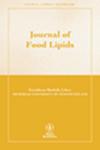Drupe characteristics, phenolic content and antioxidant capacity of olive fruits were studied for 12 Italian oil cultivars grown in two areas (Cerignola and Torremaggiore) of Daunia district. The effects of plantation place were higher than those exerted by cultivars on drupe characteristics such as weight, pulp/stone ratio, oil content and maturation index. Olive fruits from Cerignola, which is located at a lower altitude than Torremaggiore, showed the highest phenolic content. The highest phenolic content (14 g gallic acid/kg dry olive) was detected on Peranzana and Cellina di Nardò grown in Cerignola groves. The lowest values were registered for FS17 and Cima di Melfi (about 7 g/kg). 1-Acetoxypinoresinol, 3,4-dihydroxyphenylethyl 4-formyl-3-formylmethyl-4-hexenoate, the dialdehydic form of decarboxymethyl elenolic acid linked to hydroxytyrosol (3,4-DHPEA-EDA), hydroxytyrosol and luteolin, were the phenolic compounds detected in a greater amount and in most of the cultivars. Independently on the assay applied, the highest antioxidant activity was detected for Cellina di Nardò (Cerignola). The lowest antioxidant activity values were different depending on the method applied. According to the 2,2′-azino-bis-(3-ethylbenzothiazoline)-6-sulfonic acid (ABTS) assay, the lowest value was detected for Moraiolo from Torremaggiore, whereas Nociara showed the lowest contribution to the inhibition of lipid oxidation (β-carotene beaching assay). A strong positive linear correlation (R = 0.82) existed between total phenolic content and antioxidant activity measured according to the ABTS method, whereas a low linear correlation coefficient (R = 0.36) was obtained when the β-carotene bleaching assay was used.
The experimental results obtained with this research could help farmers to increase their knowledge of the minor components of some major and minor Italian olive cultivars. In fact, there are very few works on the characterization of olive fruits destined for oil production. The analytical findings of this study can also provide useful information to the oil industries interested in processing olives having high phenolic content and high antioxidant capacity. Furthermore, the diffusion of these results could help consumers to choose, among monovarietal extra virgin oils available in the market, those derived from the cultivars rich in antioxidant compounds.


